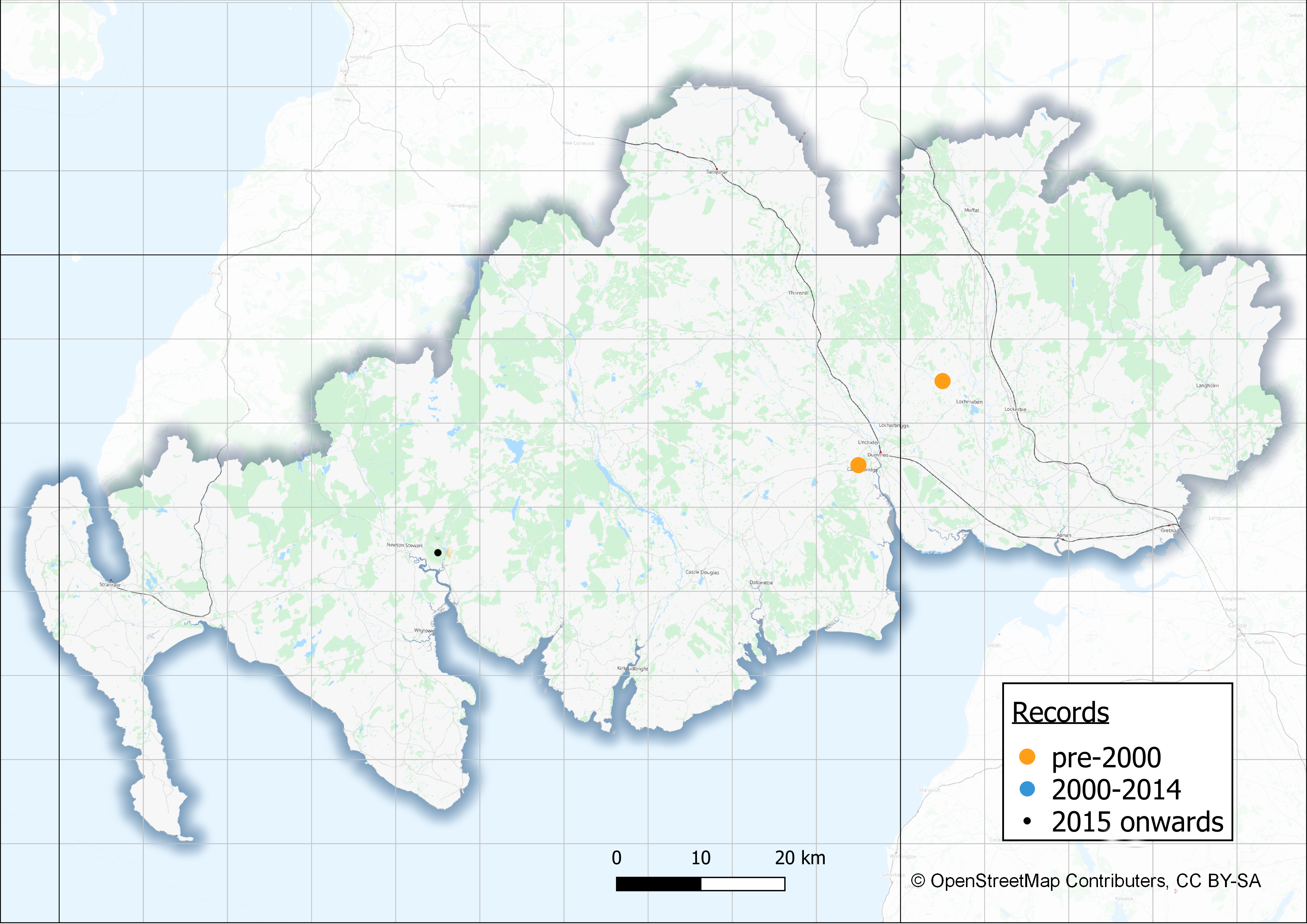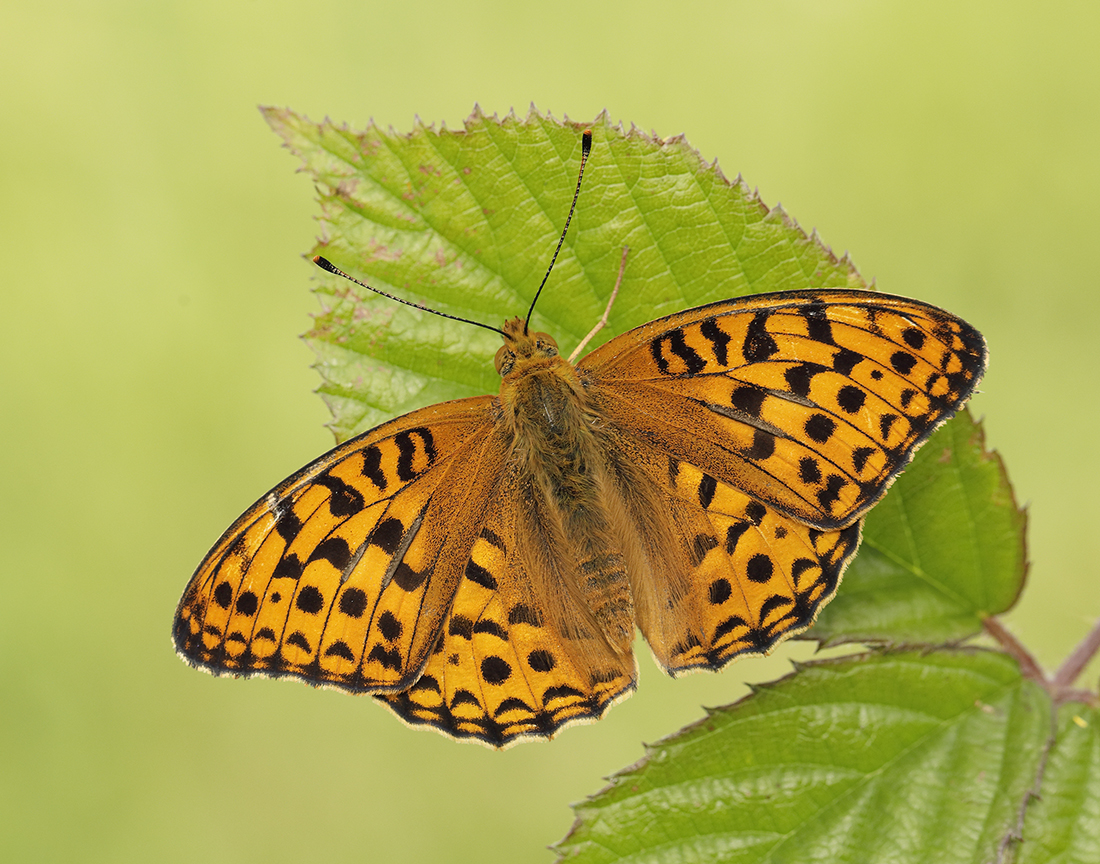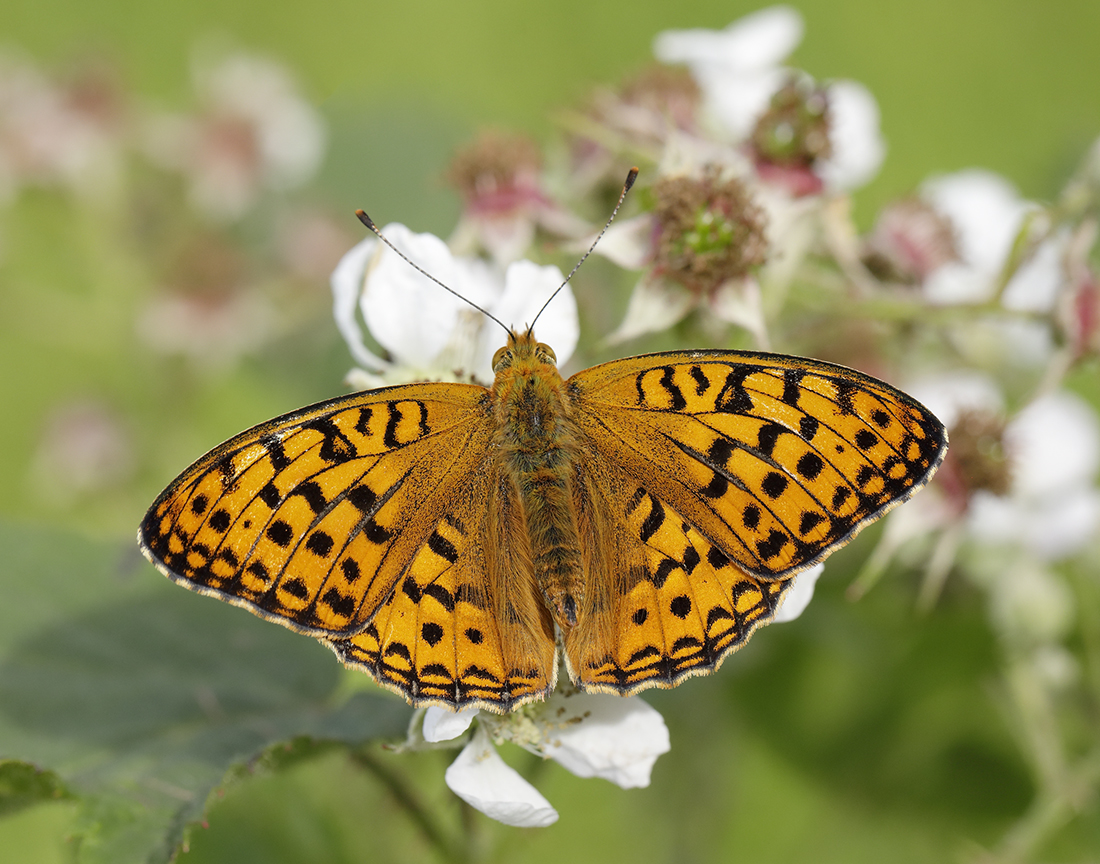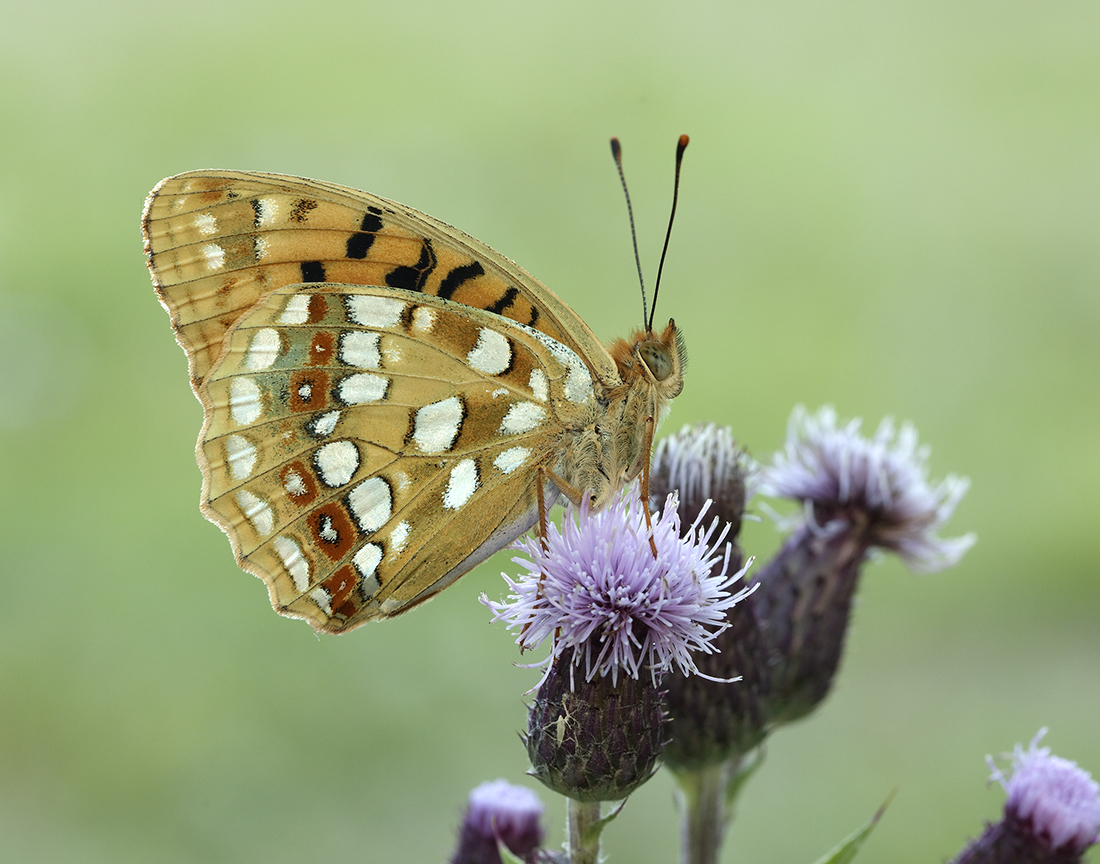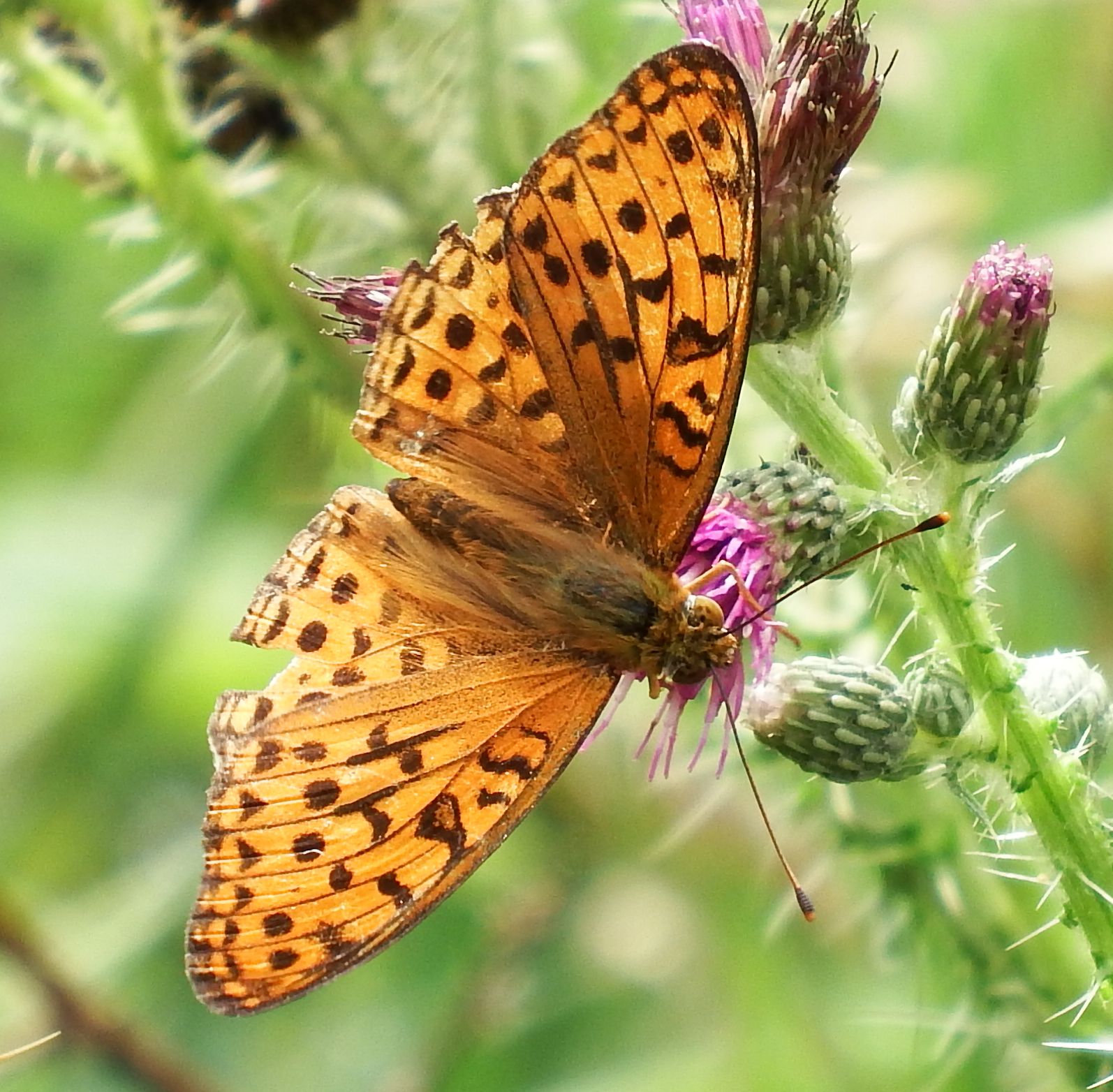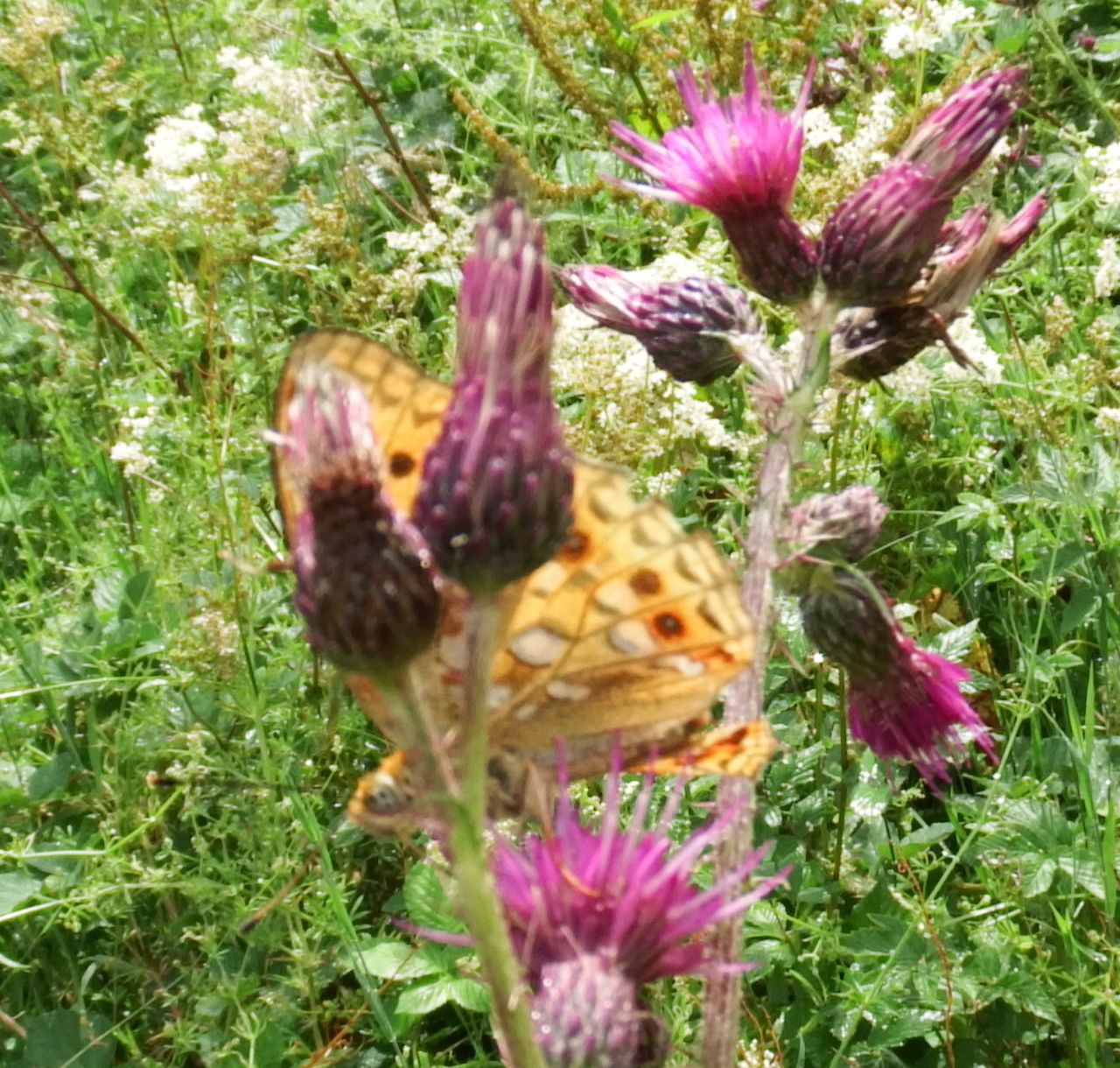This species was formerly widespread in southern Britain in managed native woodland, but due to a lack of management it is now very rare. There are however several colonies on the limestone woodlands around the Morecambe Bay and a few further north in the Lake District.
An individual was photographed near the Kirroughtree visitor centre in 2018. While it may have travelled from Cumbria it is possible there is an undetected colony in the vicinity.
The High Brown Fritillary is legally protected under the Wildlife and Countryside Act 1981 (as amended). A licence is required to disturb any of its life stages.
Identification
The High Brown Fritillary is a fast-flying and mobile species, very similar in appearance to the Dark Green Fritillary and can easily be mistaken for it as it flies at the same time in similar habitats. A good view of the underside of the wings is usually needed to be sure the identification.
The upper wings of the High Brown are very much like those of the Dark Green, but the forewings are slightly concave whereas those of the latter are slightly convex.
Life cycle & flight period
One generation a year, the adults peaking in early/mid-July. Overwinters as an egg.
Larval foodplant
Common Dog-violet and Heath Violet.
Habitats
The High Brown Fritillary needs open, sunny woodland or warm Bracken slopes with plenty of violets, a similar habitat to the Pearl-bordered Fritillary.

